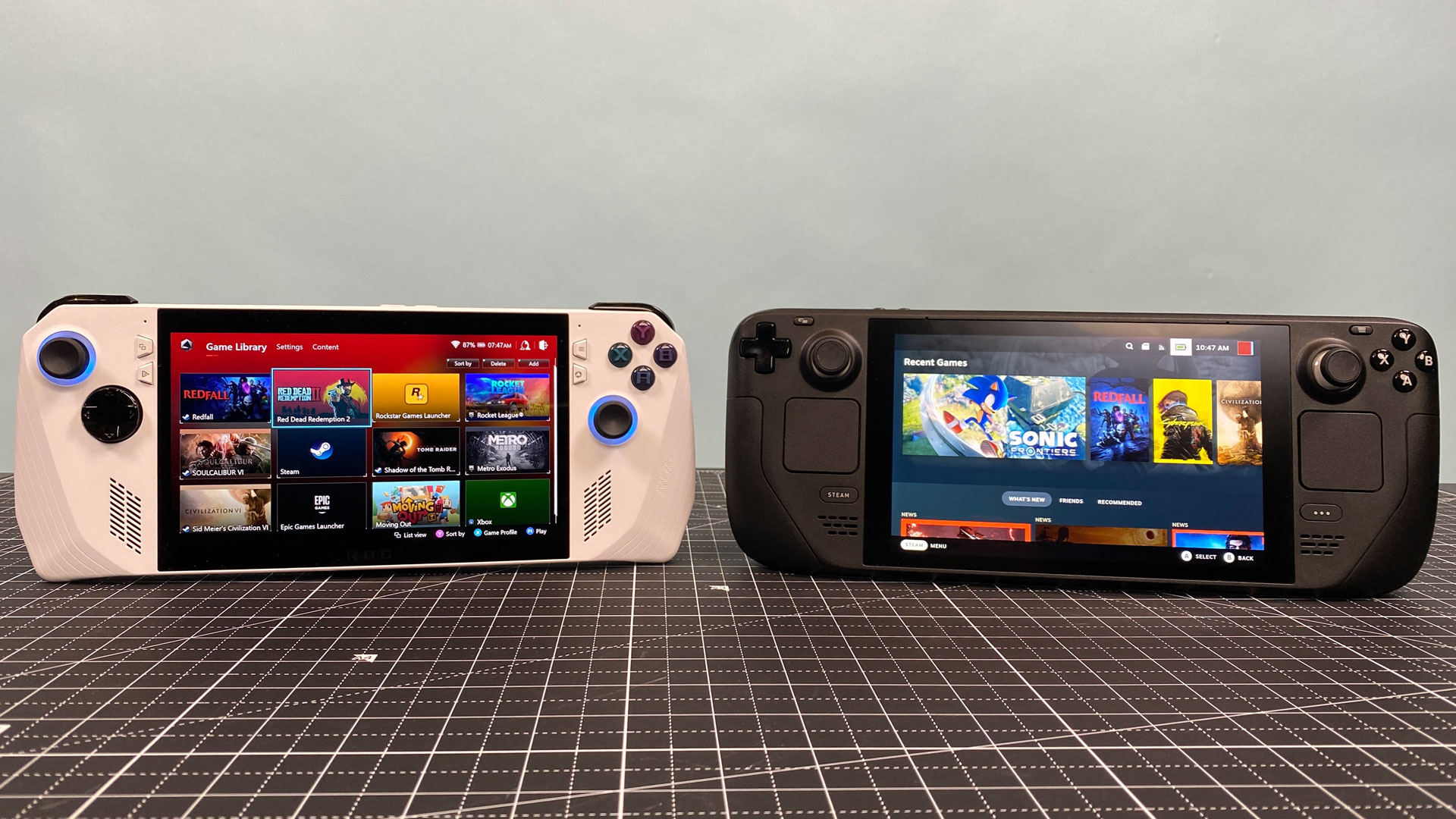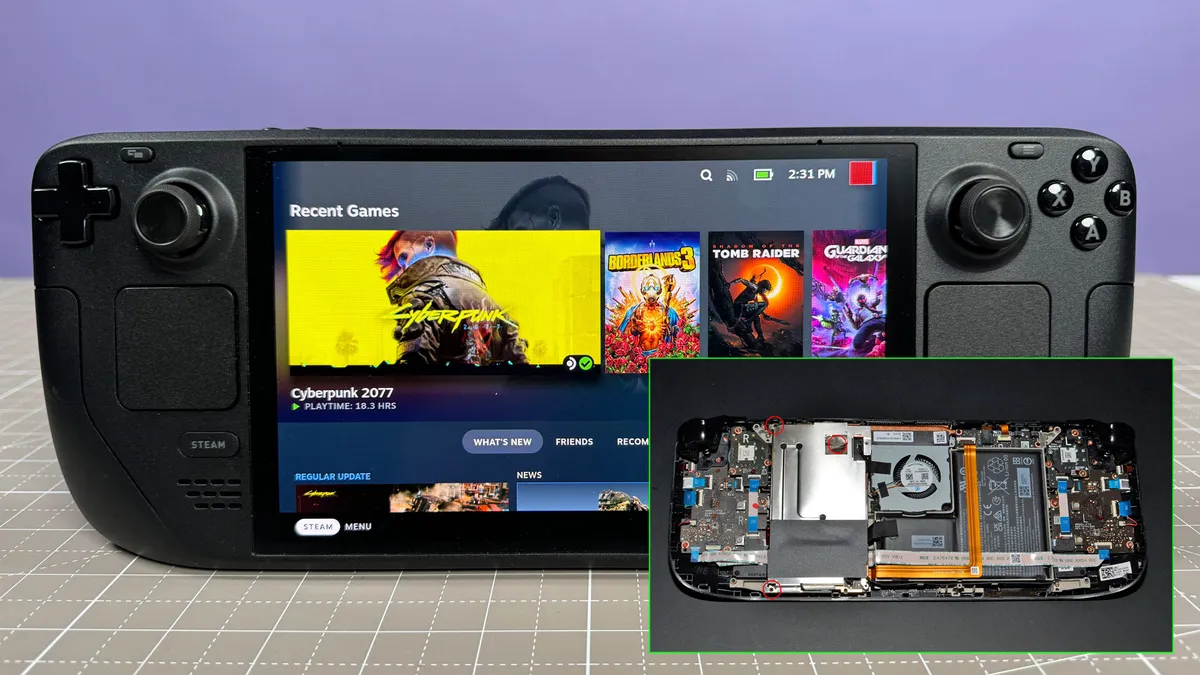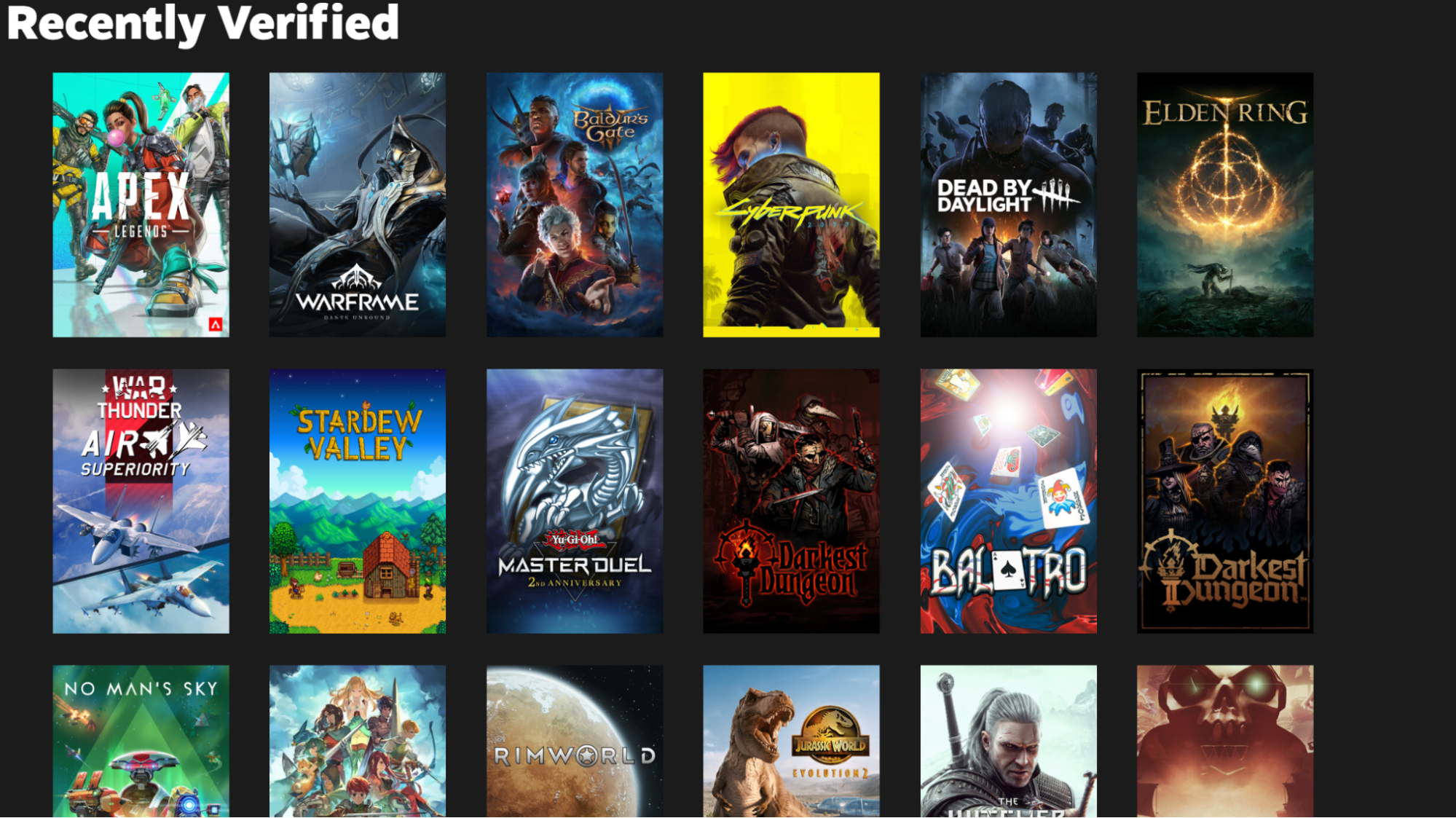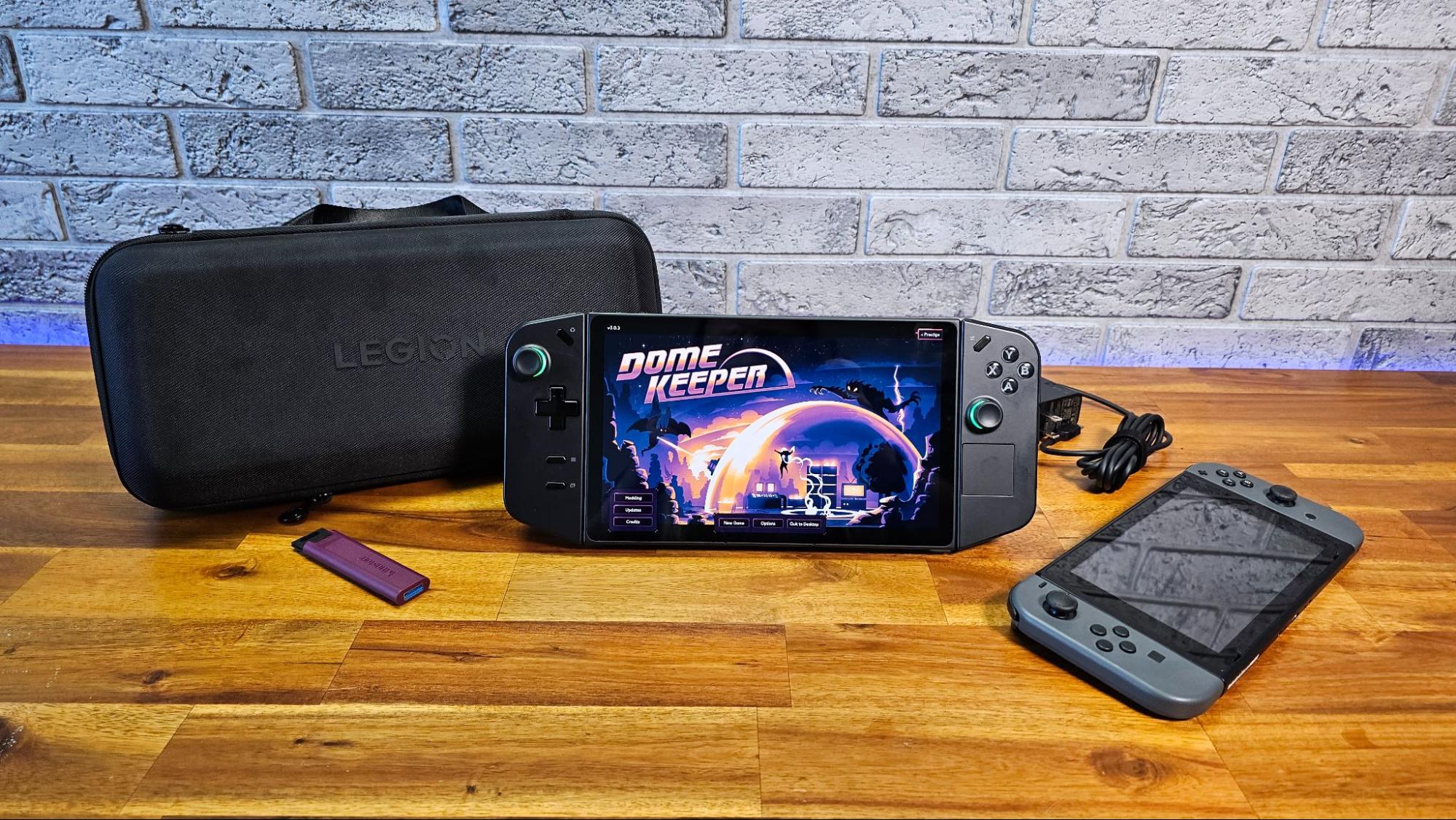The release ofValve’s Steam Deck in 2022, following the Nintendo Switch’s massive success after its launch in 2017, has created a booming, competitive gaming handheld market, spanning across consoles and the PC. Handheld PCs existed before the Steam Deck (technically,decades before the Steam Deck), but Valve’s accomplishments on the gaming front helped push the market toward its current state of regular Steam Deck alternative releases and competitive hardware. But just how competitive is that hardware, really, and how much should you be willing to spend on it here in mid-2024?
Before we get too deep into that discussion though, it’s important to establish that, thanks largely to current power and thermal limits, the Steam Deck LCD, starting at $399, is still the baseline for handheld gaming power. That’s true even though there are much more expensive alternatives. The Steam Deck has capabilities similar to modern consoles (including very light ray tracing or RT support in some titles), but is most akin to a last-gen Playstation 4 Pro. This includes the ability to play titles likeElden Ringabove 30 frames per second.

This may change at some point, but for now, the only way to get a truly high-end, on-the-go gaming experience is by using one of thebest gaming laptops. Handhelds are perfectly capable of delivering an enjoyable gaming experience between 30-60 fps in most modern games, though.
Essential differences between gaming handhelds, explained
Before meaningful comparisons can be made between the different handhelds, we should establish some basic terminology. Much of this will be familiar to hardware enthusiasts and experienced PC builders. But for those considering a handheld as their first foray into PC gaming, defining some basics will be important for understanding the pros and cons of competing devices.
Handheld Game Compatibility and Valve Proton
A major factor in the success of the Steam Deck has been the Proton compatibility layer, maintained by Valve Software on Github. Proton is also bundled in the Linux Steam client, and is built into SteamOS to enable easy compatibility withmost Windows games on Steam. There are some major exceptions to Proton compatibility on Steam Deck, though, including the anti-cheat software required for some major multiplayer titles. Most recently, this includes pretty mucheverything using EA anticheat, includingBattlefield V.
The Steam Deckcanalso run Windows, but will often achieve its best performance on SteamOS due to its ability to leverage pre-cached shaders for Steam Deck titles. This allows the Steam Deck to reduce shader compilation stutter in some titles that otherwise don’t have the feature in their Windows release. This means most performance targets are smooth once you’ve picked the correct graphics settings.

Ray tracing pretty much ensures a 30 fps or worse experience if you enable it in anything, though — if the game is playable at all. Mostly rasterized games (likeDoom Eternalwith RT reflections enabled) might be playable, but most full RT games (likeMetro Exodus Enhanced Edition) simply will not be playable on Deck’s limited hardware. If in doubt, enable resolution scaling, disable RT, and even consider disabling AA.
Get Tom’s Hardware’s best news and in-depth reviews, straight to your inbox.

Outside of Steam Deck and other Linux handhelds having access to Proton, Windows generally offers the best game compatibility and graphics settings flexibility. A proper console like the Switch OLED will have a more limited library and graphics settings, but can still turn around locked-ish 30 fps to a surprisingly playable effect in intensive titles like Doom Eternal. Of course, Nintendo’s own games tend to run at 60 FPS, with more stylized than realistic graphics — and you get those Nintendo exclusives on Switch, of course.
Sub-$500 Steam Deck Alternatives
When shopping solely in the sub-$500 range for a Steam Deck alternative, your options are still quite limited. What few choices there are either opt for ARM and Android (which is starting to improve but is still less optimal for gaming today), or are just weaker than the Steam Deck overall. Perusing the used market can improve the situation, though that comes with its own risks.
In this range, your screens will usually be resolution-limited to 720p or 800p, though the streaming-centricPlayStation Portalhas a 1080p screen.

$500+ Steam Deck Alternatives
The best Steam Deck alternative right now actually might just be the Steam Deck OLED, which is a refreshed model at a higher price. While more powerful Ryzen 7840U, Ryzen 8840U, and Ryzen Z1 Extreme handhelds exist, these handhelds are really at their best when plugged into a wall or 65W+ power bank, and exhibit very similar performance to the Steam Deck when running on battery. The big reason to look at alternatives is if they have specific features or specifications that appeal to you — like the ROG Ally’s VRR or improved eGPU support, or if you wantWindows 11preinstalled.
Nearly every device in this pricing bracket has a 1200p, 120 Hz screen except Deck OLED. This is nice in theory, but can be a tough target to hit with modern games, particularly without using heavy image scaling or sticking to 2D games.

Note: This category would normally include some of GPD’s devices, but they all seem to be mid-refresh and so both past-gen, and current-gen GPD hardware cannot be ordered from the company’s site at the time of writing.
Upcoming Handheld Devices: Reasons To Wait
Upcoming Devices: Reasons To Wait
Ayaneo is preparing multiple new devices, seemingly for release around the same time. Its most unique upcoming offering is theFlip DS, which crosses the modern Deck form factor with that of legacy Nintendo dual-screen handhelds. But there are also more traditionalNext Liteand Flip KB handhelds on the way from Ayaneo. These are all slated to be 7840U-, 8840U-based, or weaker handhelds.
Alternatively, startupPlaytronhas announced an ambitious plan to take on Valve with a new Linux distribution called PlaytronOS and matching custom handhelds. These handhelds will most likely leverage Qualcomm’s high-end Snapdragon X Elite chips, or at least be optimized for them, which at least sounds interesting due to theX Elite’s supposedly great gaming performance. Playtron’s goal is to provide a SteamOS-like unified Linux interface for all PC games, not just the ones on Steam.
The ever-churning GPD is mid-refresh cycle and preparing a slew of upcoming Ryzen 8840U handhelds. TheGPD Win Mini 2024looks like another compelling clamshell option for those who don’t need dual screens and who like VRR, while theWin Max 2refresh looks to be ideal for those who likeparticularlylarge screens on their tablets. But these all fall within expectations of a market currently dominated by AMD’s Ryzen 7840U and 8840U CPUs at the high end.
What portable gamer fans are anticipating most is the seemingly impending release of the Nintendo Switch 2, and the likely price-to-performance advancements that will come with it.The latest Switch 2 leaks point toward that release being early in 2025— possibly around March, which is when the Nintendo Switch launched back in 2017. With much more competition in the form of the Steam Deck and its contemporaries, handheld gaming has never looked better— but like with all PC hardware, it can often seem enticing to wait a little longer.
Christopher Harper has been a successful freelance tech writer specializing in PC hardware and gaming since 2015, and ghostwrote for various B2B clients in High School before that. Outside of work, Christopher is best known to friends and rivals as an active competitive player in various eSports (particularly fighting games and arena shooters) and a purveyor of music ranging from Jimi Hendrix to Killer Mike to the Sonic Adventure 2 soundtrack.